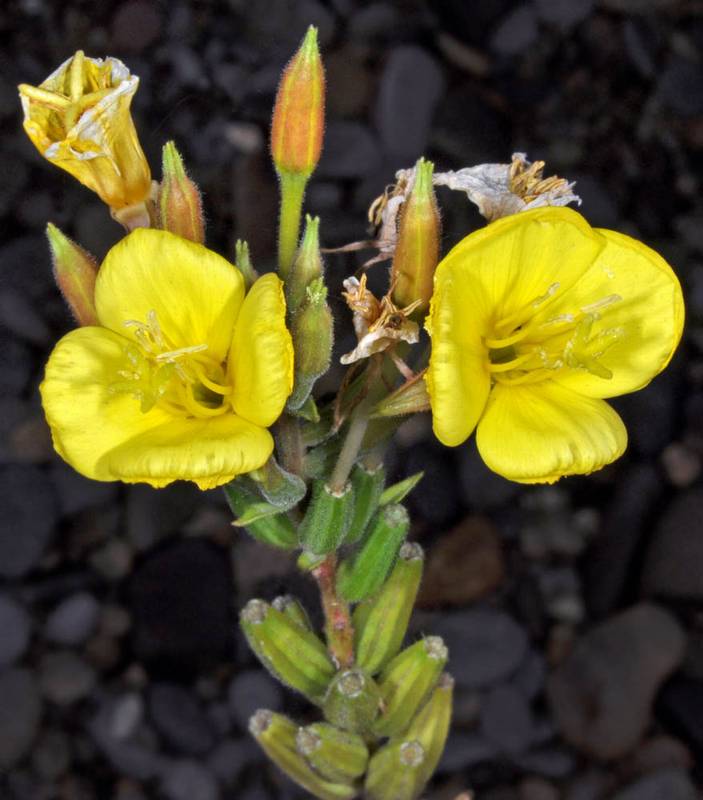Oenothera curtiflora
Oenothera biennis
small-flowered gaura, velvet weed, velvetweed
King's-cureall, common evening primrose
Leaves alternate, the basal leaves spatulate, the lower cauline leaves oblong, the others oblong-lanceolate to lanceolate, 4-15 cm. long, entire to wavy-dentate, gradually reduced upward to very small, linear floral bracts.
Leaves alternate, the lower leaves petiolate, the upper sub-sessile, lanceolate, 1-2.5 cm. broad, entire to wavy-dentate.
Inflorescence of many-flowered spikes, 1-3 dm. long;
calyx tube very slender, 2-3 mm. long, with 4 distinct, reflexed lobes 2-3 mm. long;
petals 4, short-clawed, pinkish, 2 mm. long;
stamens 8, filaments without basal scales;
ovary inferior, 4-celled.
Inflorescence an elongate spike, the buds erect, with bracts more or less the length of the capsules;
calyx tube 3-5 cm. long, the 4 lobes 10-15 mm. long, reflexed, distinct;
petals 4, yellow, 1-2 cm. long;
stamens 8, equal to the petals and style;
stigma with 4 linear lobes 4-7 mm. long;
ovary inferior, 4-celled.
Fruit hardened, 6-10 mm. long, spindle-shaped, glabrous, 4-angled by not winged.
Capsule 2.5-4 cm. long, linear, cylindrical.
Oenothera curtiflora
Oenothera biennis
- Local floras:
BC,
CA,
OR,
WA
- Local Web sites:
CalFlora,
CalPhotos,
Flora NW,
PNW Herbaria
WildflowerSearch
iNaturalist (observations)
USDA Plants Database
- LBJ Wildflower Center
- SEINet
- Plants of the World Online
- Encyclopedia of Life
- Wikipedia
- Google Image Search
- Local floras:
BC,
CA,
OR,
WA
- Local Web sites:
CalFlora,
CalPhotos,
Flora NW,
PNW Herbaria,
Turner Photog.
WildflowerSearch
iNaturalist (observations)
USDA Plants Database
- LBJ Wildflower Center
- SEINet
- Plants of the World Online
- Encyclopedia of Life
- Wikipedia
- Google Image Search



